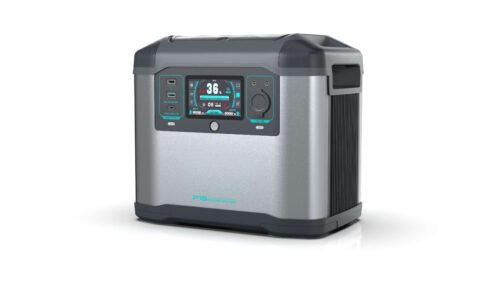Lithium Battery Production Process
Structure of Lithium Batteries The structure of a lithium battery is divided into five components: the cathode, anode, separator, electrolyte, and casing.
- The cathode of a lithium battery includes active materials, conductive agents, solvents, binders, and substrates.
- The anode contains active materials, binders, solvents, and substrates.
- The separator in a lithium battery.
- The electrolyte in a lithium battery.
- The casing of a lithium battery encompasses steel casings, aluminum casings, top caps, current collectors, and insulating tapes, among other metal components.

While the production process varies among manufacturers, most follow these general steps: Material preparation – Slurry mixing – Coating – Calendaring – Slitting – Drying – Winding – Cell assembly – Laser welding – Drying – Electrolyte filling – Pre-charging – Sealing – Cleaning – Aging test – Warehousing and shipping.
Lithium Battery Manufacturing Process Objectively, the lithium battery production process is segmented into three main phases: electrode fabrication, cell core construction, and battery assembly. Electrode fabrication lays the groundwork, cell core construction is central, and battery assembly directly affects the finished battery’s quality. The detailed stages of the process include cathode slurry preparation, anode slurry preparation, cathode sheet formation, anode sheet formation, steel casing assembly, electrolyte injection, inspection, and packaging.
Overview of the Lithium Battery Production Process It’s widely recognized that the lithium battery production process is intricate. The safety performance level of lithium-ion battery products is directly linked to consumer health. Consequently, high demands are placed on the performance, precision, stability, and automation levels of the manufacturing equipment.
Taking the preparation of electrode slurry in the lithium battery production process as an example — though it’s the first stage, it’s arguably the most critical. After all, the mixing and dispersing process of the electrode slurry can impact the product’s quality by more than 30%. This is because the preparation of both the cathode and anode slurries encompasses a series of processes, including the mixing, dissolving, and dispersion of liquid-to-liquid and liquid-to-solid materials, all while adapting to changing temperatures, viscosities, and environments.
Within the cathode and anode slurries, the dispersion and uniformity of particulate active materials directly influence the movement of lithium ions between the battery’s two poles. Thus, the dispersion quality of the electrode slurry has a direct bearing on the battery’s performance.
In conclusion, each stage in the lithium battery production process is intrinsically linked with product quality and safety. Rigorous and meticulous management is imperative at every step to enhance the safety performance of lithium battery products.






